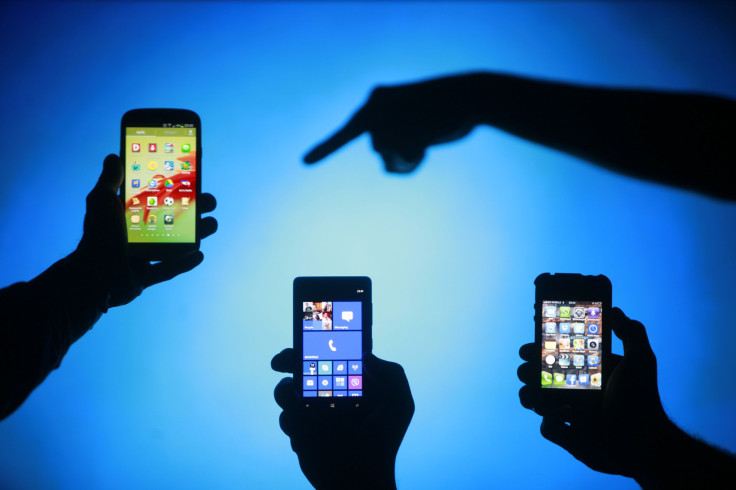Apple, Android Mobile Duopoly Under Threat As Smartphone Growth Starts To Decline In 2015: IDC

Waiting for smartphone sales to hit their peak? It just happened. Smartphone shipments boomed in 2014, increasing 26.3 percent to 1.3 billion units from 2013, but growth rates will start declining in 2015 and are expected to decrease by more than half in the next year, according to International Data Corporation (IDC).
Global smartphone shipments may reach 1.4 billion in 2015, a 12.2 percent increase from the year prior, the IDC detailed in a research note Monday.
Smartphone sales spiked between 2013 and 2014, driven by global expansion, new entrants from China and of course two new iPhones in September. But from here on out smartphone sales will start being impacted by their own large numbers and growth rates continue to slow.
China rising
As growth slows, the Apple-Google (iOS-Android) duopoly will start to come under pressure, particularly from China. Companies like Xiaomi, Huawei and Lenovo are not only taking market share from Apple and others, by offering increasingly cheaper prices, they're also affecting the global average selling price for smartphones. The average price, currently $297, is expected to drop to $241 by 2018, according to the IDC.
"The impact of upstart Chinese players in the global market will be reflected in a race to the bottom when it comes to price,” said Melissa Chau, senior research manager with IDC's Worldwide Quarterly Mobile Phone Tracker. “While premium phones aren't going anywhere, we are seeing increasingly better specs in more-affordable smartphones."
Apple’s iOS share is expected to drop from 13.8 percent of the market in 2014 to 12.8 percent of the market by 2018. Android devices are also expected to see share drops, from 82.3 percent of the market to 80 percent. Other less-established operating systems are expected to pick up that market share. The share for the Windows operating system is expected to double between 2014 and 2018 from 2.7 percent to 5.6 percent. Other unidentified systems are also expected to grow from 1.1 percent of the market to 1.6 percent by 2018.
Duopoly under pressure
Devices powered by the Window's operating system and other software are often found on inexpensive devices that appeal to the low-end, developing market, which is expected to be a major source of smartphone growth in the next three years. In particular, Xiaomi’s Android-based MIUI is more or less an operating system onto itself, as it does not run Google applications such as the Google Play Store, Gmail and Google Maps.
For the remainder of 2014, Apple should do well. Mobile carriers including AT&T, Verizon, Sprint and T-Mobile expect iPhone 6 back-orders to propel them into a successful holiday season. Apple itself is expected to see a successful quarter of sales; KGI Securities analyst Ming-Chi Kuo projects the manufacturer will ship 71 million iPhones but says shipments may drop to 50 million in the new year.
The Android ecosystem includes devices by different manufacturers that all have their own struggles in the market. Manufacturers like Samsung Electronics Co. and HTC Corp. have seen dips in sales in the last year. And while manufacturers like LG Electronics have shipped and sold more smartphones in the last year, its market share is still minute vs. Samsung and Apple, which remain the global market’s top two smartphone producers. Chinese manufacturers of Android-powered devices like Lenovo and Huawei may be stealing market share away from major players, but their continued growth keeps the overall drop in Android market share at a minimum.
© Copyright IBTimes 2025. All rights reserved.




















